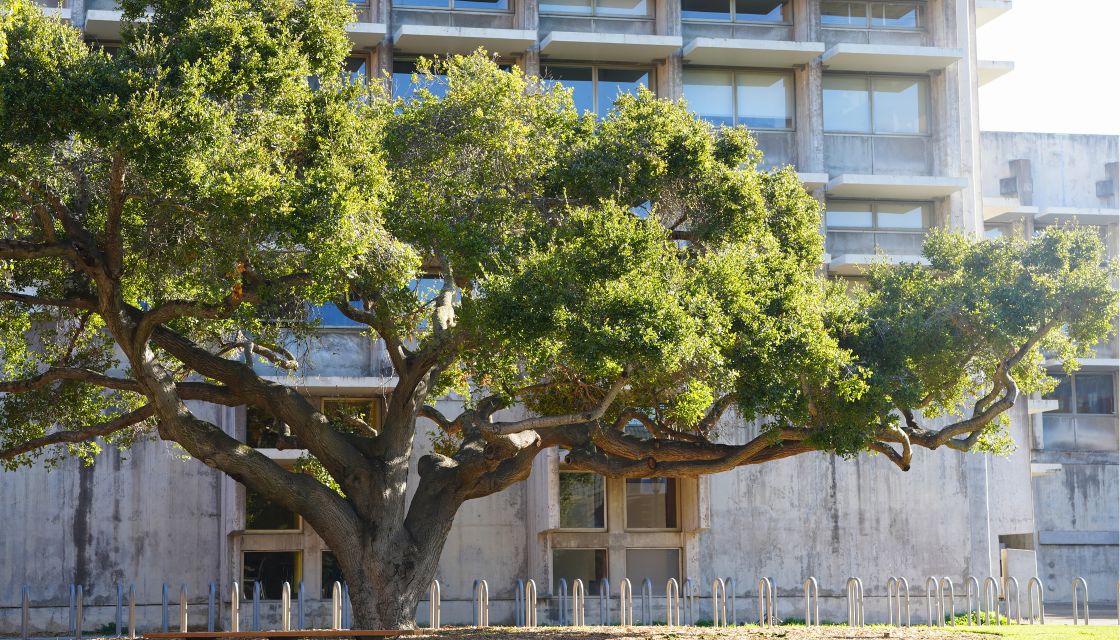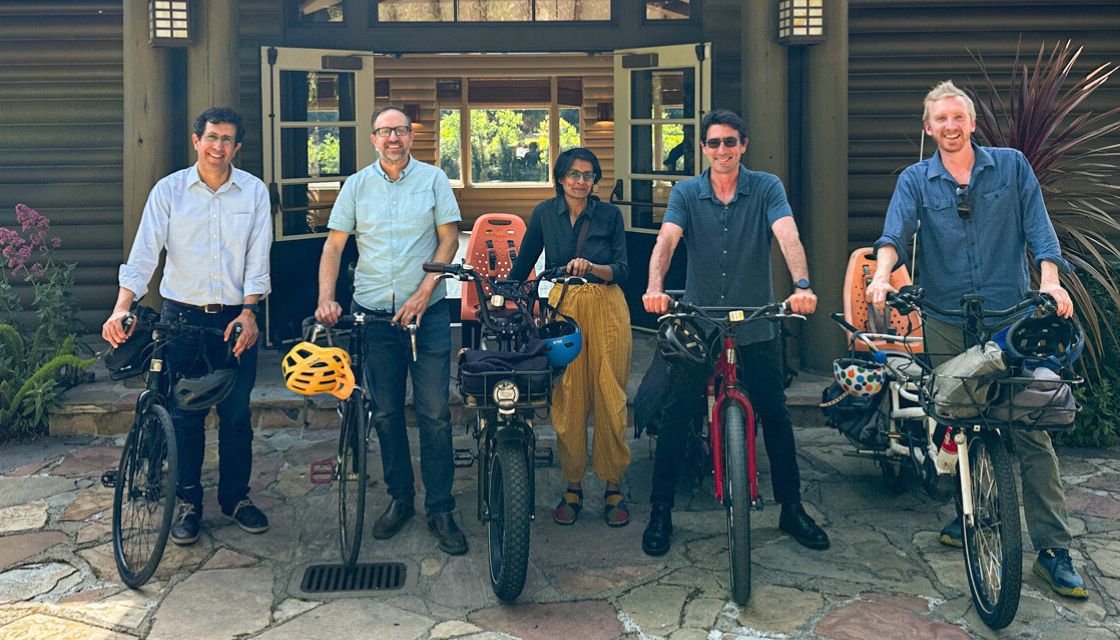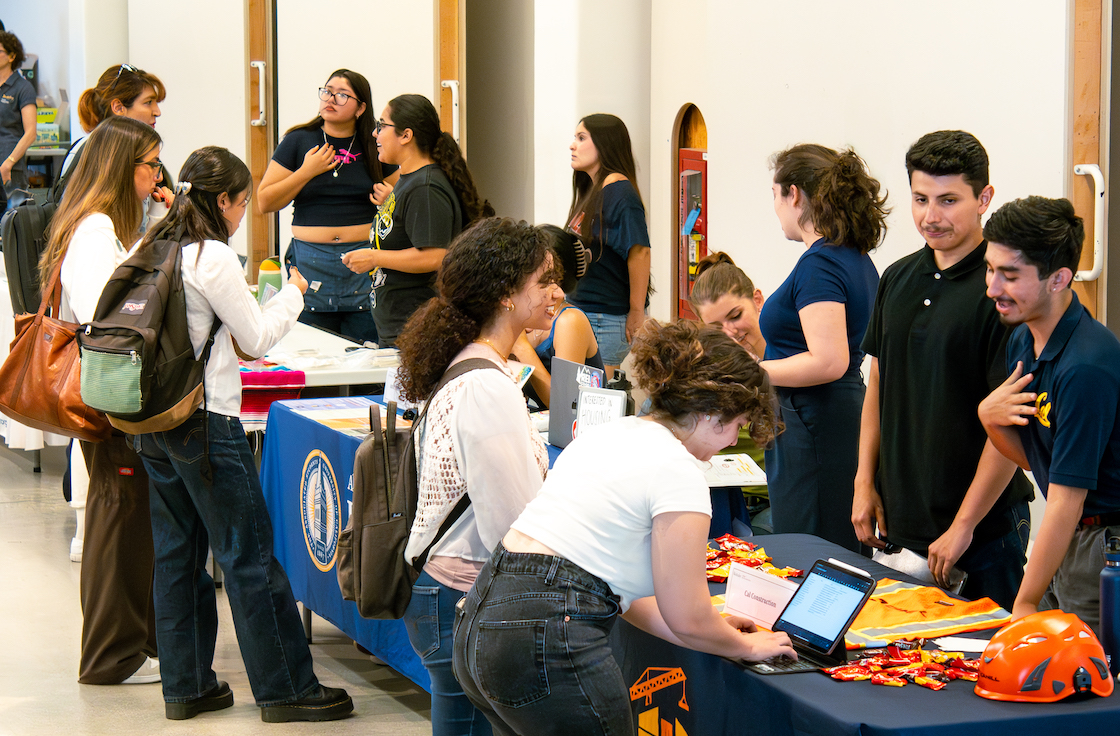Master of City Planning
Berkeley’s top-tier Master of City Planning is a two-year nationally accredited STEM degree program that empowers you to successfully practice planning in a variety of urban, metropolitan, and regional settings. Berkeley’s MCP offers a rigorous curriculum and inclusive environment designed to prepare you to contribute to making cities sustainable, equitable, and accessible for all.
As a Berkeley MCP student, you’ll develop expertise in city and regional planning fields as well as build analytical, research, and communication skills. Berkeley’s MCP is distinguished by its focus on the human impacts of planning decisions, with particular attention to equity, diversity, and justice.

ABOUT THE PROGRAM
At Berkeley, you’ll join a department committed to improving the equity, economy and environment of neighborhoods, communities, cities, and metropolitan regions. The department’s teaching and research is grounded in a dedication to understanding the historical and theoretical underpinnings of planning governance and practice. We aim to design and create cities, infrastructure, and public services that are sustainable, affordable, enjoyable, and accessible to all.
As a Berkeley MCP student, you’ll gain:
- Lifelong analytical, research, and communication skills
- Knowledge and skill sets to successfully practice planning in a variety of urban, metropolitan, and regional settings
- An understanding of the history and theory of planning
- Comparative, international perspectives on the development of cities and urban regions
- Sensitivity to the human impacts of planning decisions, with particular attention to equity, diversity, and racial and social justice
Berkeley’s MCP combines a common core curriculum with the opportunity to specialize in one or more of the following concentration areas:
- Environmental Planning and Healthy Cities
- Housing, Community, and Economic Development
- Transportation Policy and Planning
- Urban Design
Why Berkeley

The Department of City & Regional Planning offers a rich intellectual community rooted in the dynamic contexts of UC Berkeley, the Bay Area, and California. As a UC Berkeley graduate student, you will be studying at the number one public university, alongside the brightest and most passionate students from around the world. UC Berkeley’s environment is characterized by a deep commitment to critical inquiry, collaborative discovery, and innovation.
About the College of Environmental Design

The Department of City & Regional Planning, founded in 1948, joined with the Departments of Architecture and Landscape Architecture to form the College of Environmental Design in 1959. Berkeley was the first university to bring together these disciplines into a single college, leading the way toward an integrated approach to analyzing, understanding, and designing our built environment. The college emphasizes environmental design as a profoundly ethical practice, inseparable from social, political, economic, and cultural contexts and co-produced through dynamic engagements with diverse communities.
Our Faculty

In Berkeley’s MCP program, you’ll have the opportunity to study with world-class faculty who are experts in a range of disciplines, including city planning, public policy, anthropology, geography, physics, and architecture.
- Faculty Specializations
- Climate change: Sustainable urbanism, environmental and climate justice, decarbonization, climate resilience, political ecology
- Housing planning and policy: Affordable housing development, land use and zoning policy, mortgage finance, land markets and urban economics, property rights, homelessness, mobile homes and manufactured housing
- Inequality and segregation: Urban poverty, the cultural and political economy of racism, racial and gender inequalities, class and racial segregation
- Healthy cities: Water and sanitation infrastructure, food systems planning and food security, environmental health, urban gun violence reduction
- Transportation policy and planning: Active planning, transportation infrastructure, land use planning
- Data science: GIS, computer modeling, spatial analysis, machine learning and artificial intelligence
- Community and economic development: education policy, access to credit, community organizing, workforce development and green jobs, community land trusts
- Planning history and theory, comparative urban studies, urban governance
Plan of Study
The MCP curriculum balances the need to develop core planning knowledge and skills (the core), expertise in a specific domain of planning (the concentrations), and the flexibility to use elective credits to either a) deepen expertise in a specific domain, b) broaden knowledge of a wider range of planning courses by studying the intersections between environmental planning, housing, land use, and transportation, c) deepen methodological skills in GIS, data science, design, or qualitative and participatory methods, or d) take classes across UC Berkeley’s dynamic campus.
The MCP is a two-year, in-residence program. To earn the MCP degree, you must complete:
- 48 units of in-residence coursework or 36 units in concurrent/dual degree programs
- Courses in the core curriculum (history and theory, economics, law, and methods)
- Courses in at least one concentration area
- A studio course, a group based learning environment that integrates substantive and methodological knowledge for an external client
- A capstone project consisting of either a client report, a professional report, or a master’s thesis
Concentrations
You have the choice of four concentrations designed to support inquiry and expertise in a specific planning domain. For more information on each of the concentrations as well as the specific course offerings.
- Environmental Planning and Healthy Cities (EPHC)
- Housing, Community, and Economic Development (HCED)
- Transportation Policy and Planning (TPP)
- Urban Design (UD)
In the Environmental Planning and Healthy Cities concentration, you will be trained in theory and practice in the areas of climate change, urban sustainability, resilience, environmental justice, political ecology, and human health.
Faculty: Charisma Acey, Stephen Collier, Jason Corburn, Zoe Hamstead
The concentration in Environmental Planning and Healthy Cities (EPHC) provides you with the knowledge and skills necessary to analyze and plan for pressing urban environmental and health challenges, such as climate change, natural resource depletion, access to basic services and infrastructure, and ecologic and human health risks and mitigation, especially as they impact socially vulnerable people and communities. The concentration introduces you to the relationships among natural, built, and social environments in cities, as well as the local, regional and global impacts of urban ecosystems and the political institutions that aim to manage these environments.
In the Housing, Community, and Economic Development CED concentration, you are exposed to the theory and practice underlying efforts to address the systemic inequalities that produce racially, ethnically, and religiously segregated landscapes of poverty and wealth.
Faculty: Sai Balakrishnan, Max Buchholz, Teresa Caldeira, Justin Hosbey, Zachary Lamb, Ben Metcalf, Deborah McKoy, Carolina Reid
The concentration in Housing Community and Economic Development (HCED) provides you with the knowledge and skills necessary to analyze and address issues of racial, social, and economic justice, including topics such as affordable housing development, property rights and land tenure, segregation, racial capitalism, local and regional economic development, education and schools, and global urban inequalities.
This concentration draws on two strong strands of faculty expertise: 1) a theoretically informed understanding of private property and land tenure, segregation, and the production of urban inequalities, and 2) a practice-oriented approach to housing policy, affordable housing development, and inclusionary forms of land organization, both in the United States and the Global South.
In the Transportation Policy and Planning concentration, you are exposed to the theory and practice of planning for urban transportation, including active and public transit systems, land use, and interactions of transportation and land use with the built, natural, and social environments.
Faculty: Daniel Chatman, Marta González, Daniel Rodríguez, Karen Trapenberg-Frick
The Transportation Policy and Planning (TPP) concentration provides you with the knowledge and skills to address the planning and policy challenges encountered by attempting to increase the use of environmentally sustainable travel modes — walking, cycling, public transit — and the creation of environmentally sustainable land-use patterns, such as compact growth and transit-oriented development. The TPP concentration is characterized by a multidisciplinary focus on the intersections between regional mobility, air quality, global climate change, energy, and equality of access. The courses in the concentration are focused around themes of equity, environmental justice, and social welfare. They present the social, economic, and environmental implications of transportation and land use plans and policies, and promote economic efficiency, green transport, resource conservation, and environmental protection.
Urban Design (UD) In the Urban Design (UD) concentration, you are exposed to the theory and practice of urban design, with attention to how changes to the built environment can respond to social, environmental, and economic concerns.
Faculty: Maryam Hosseini, Zachary Lamb
The Urban Design (UD) concentration focuses on how places look, how they feel, how they relate to natural processes, and how they work for the people who use them. It provides you with the knowledge and skills to shape built and natural environments both directly through their proposals for specific interventions and indirectly through their contributions to policies and plans that shape the actions of other city making actors.
Courses in urban design focus on the public realm of cities, with central concerns being livability, identity, place-making, equity, environmental performance, the interface between the public and private realms, and the quality of everyday life. The concentration draws on approaches from the disciplines of city planning, architecture, and landscape architecture, as well as theories and methods from the social sciences with the intent of analyzing the urban condition and designing the urban realm.
Concurrent Degrees
You can expand your course of study by earning a concurrent degree with your MCP. We offer the following concurrent degrees: Master of Architecture, Master of Landscape Architecture, Master of Public Health, Master of Science in Transportation Engineering, Juris Doctor (law).
Student Organizations

College of Environmental Design Students of Color (CEDSOC) aims to develop and expand the academic and social support, mentorship, career networking, and advocacy efforts for students of color and other underrepresented students.
The Planning Students Association (PSA) supports the MCP program professionally through events such as alumni mixers, socially through trips and other events, and through student advocacy.
TRANSOC supports the well-being and success of transportation graduate students from related disciplines across the UC Berkeley campus. Its mission is to empower students with abundant academic, social, and professional resources and connect current students with a powerful global network of alums.
Internships + Careers
MCP students often complete a three-month internship at a government agency, nonprofit, or private firm, or other planning-related organization, in the summer after the first year.
These internships provide valuable professional development experiences, and often pave the way for future careers. Our graduates go on to careers in many different sectors and roles, including public agencies (at the local, regional, state and federal level), nonprofits and community organizations, consulting firms, research institutions and universities, and elected officials. Common focus areas include sustainable transportation and land use, housing, economic development, urban health and social policy, environmental sustainability, global urbanization and poverty, and urban design for livable places.
- Selected Employers
- Public Agencies: City and County of San Francisco; Cities of Berkeley, Richmond, Albany, and Oakland; Alameda County of Public Health; San Francisco Parks and Recreation; ABAG; California Department of Housing and Community Development; California Coastal Commission; County of Marin; US Department of Housing and Urban Development; US Environmental Protection Agency; MTC, SFMTA
- Research and Policy Organizations: SPUR, BAE Urban Economics, PolicyLink, Terner Center for Housing Innovation, The Urban Institute, Nelson / Nygaard Consulting Associates, Enterprise Community Partners
- Housing and Community Development: Chinatown Community Development Center, The Unity Council, Bridge Housing, Midpen Housing, Eden Housing, Resources for Community Development, SAHA, EBALDC, the Community Builders
- Transportation: Fehr and Peers, Nelson\Nygaard Consulting Associates, Center for Transportation and the Environment
- Academia: University of Maryland, College Park; University of Illinois, Urbana-Champaign, UC Davis, UCLA, NYU, Columbia University
- Application Requirements
- Additional significant application elements
- Bachelor’s degree or recognized equivalent from an accredited institution
- Advanced Grade Point Average (AGPA) of 3.0 or B or better (on a 4-point scale) for all coursework AFTER the first two years of UNDERGRADUATE study.
- If your undergraduate institution used a 4-point grading scale, please calculate your AGPA using our calculator: Download the Excel or Google Sheets version to your computer and enter your grades to determine your AGPA.
- For applicants whose undergraduate institution does NOT utilize a 4-point scale, the calculation of an AGPA is NOT required.
- Please enter your university’s GPA into the Other Scale GPA box.
- For all other GPA boxes (Advanced, Major, Courses Related to Field of Graduate Study), enter “N/A.”
- Evidence of English Language Proficiency
- All applicants (domestic and international) who have completed a basic degree IN a country or political entity in which the official language is NOT English are required to submit official evidence of English Language Proficiency.
- This requirement applies to institutions from Bangladesh, Nepal, India, Pakistan, Latin America, the Middle East, Israel, the People’s Republic of China, Taiwan, Japan, Korea, Southeast Asian countries, most European countries, and countries in Africa in which English is not the official language.
- Applicants may email DCRP Graduate Student Services: dcrpgrad@berkeley.edu to confirm testing requirement.
Statement of Purpose
- 3 pages, double-spaced
- Please discuss (with clarity and focus) why you want to study urban planning, why you want to study at UC Berkeley, and how our program can help you achieve your academic and professional goals.
We encourage you to consider your responses to the questions below:
- Present: What brought you to pursue graduate study in planning?
- Past: What academic, employment experiences (professional work experience and/or internships) or activities (research, co-curricular activities, leadership roles, etc.) bear on your qualifications for this planning program? How do these experiences relate to your decision to study planning?
- Future: What are your long-term career goals? In following the completion of your graduate degree in planning, what kinds of work and professional activities would you like to engage?
Concurrent degree applicants (MArch, MS, MLA, JD, MPH) will submit ONE comprehensive statement that addresses your interest in and fit with both programs.
Personal History Statement
- 1-2 pages, double-spaced
- Please describe how your background and life experiences have influenced your decision to pursue a graduate degree at this time. This may include formative experiences, values, or motivations that have influenced your academic and/or professional path.
In this section, you may also include any relevant information on the following:
- Any educational, familial, cultural, economic or social experiences or opportunities that have shaped your academic journey.
- Challenges or responsibilities you have navigated in pursuit of your educational goals, and how you responded to or overcame them.
- Significant barriers or hardships you have faced, and how they have contributed to your growth and shaped your perspective.
- Leadership experiences, community outreach, service initiatives, or research projects you have participated in or plan to pursue that aim to positively impact others or the broader community.
- Ways in which your perspectives, experiences, or aspirations have aligned with UC Berkeley’s Principles of Community.
Letters of Recommendation
- 3 required
- The strongest letters are from individuals who have supervised your work in either an academic, employment (professional work experience and/or internships) or community service capacity.
- Your recommenders are encouraged to describe SPECIFIC EXAMPLES of your work that demonstrate your intellectual ability, creativity, initiative, leadership potential, and promise for graduate study in planning.
In the Recommendations section of the application, for each individual, you will:
- Enter each recommender’s contact information
- Select your answer for the “access waiver” question
- Provide your signature
- Click “send”
- Thereafter, you should notify your recommenders that they will receive an email from UC Berkeley’s Graduate Admissions Office: gradadm@berkeley.edu. The email’s subject line will be “Recommendation request from [Applicant Name] for the University of California, Berkeley” and the body of the email will outline the steps required to upload their letter to the application system.
- If your recommender has NOT received the email or they CANNOT upload their letter, have your recommender email their letter to DCRP Graduate Student Services: dcrpgrad@berkeley.edu and we will upload it for them.
- You may submit your application BEFORE your recommendations are in the application system.
For MCP–Urban Design Concentration, MARCH/MCP and MLA-2D/MCP, and MLA-3D/MCP only:
Upload a digital portfolio to the Supporting Materials section.
- The portfolio may contain 12 pages total (8- ½”x11″ format, 2-page spread = 2 pages) of urban design related content. Your portfolio will NOT be reviewed beyond 12 pages by the MCP Admissions committee.
- Title page and/or table of contents may be submitted, and will NOT count toward the 12 pages of content.
- The portfolio should showcase recent, high-quality work, and will be assessed on both content and overall design.
Applicants to the MCP–Urban Design track are NOT required to have intensive design training before admission.
Applicants WITHOUT a design background are encouraged to submit work that:
- Shows evidence of visual creativity (studio art, photography, drawing, painting, graphic design, GIS mapping, construction/renovation, web-based projects, etc.) and demonstrates interest in and aptitude for urban design
- Demonstrates the range of analog and digital methods and media that the applicant has worked with
- Highlights work that is related to the scales, questions, and methods of urban design
- Highlight how their work in visual/spatial media is related to broader questions of intellectual and social concern
Any material that is not entirely the applicant’s own work must be clearly identified. This includes identifying your role and contribution in any group work, and identifying the use of AI to generate any written or visual content.
- The portfolio must be saved as a single file in PDF format.
- The file size must be no larger than 10MB.
For more information regarding portfolio requirements for the Master of Architecture application, please visit the MArch Admissions.
For more information regarding specific portfolio requirements for the Master of Landscape Architecture application, visit MLA Admissions.
Public Information
- Admissions Statistics (Fall 2023 Admitted Class)
- Student Achievement Survey
- Tuition + Fees
- Rentention
- Organizational Types
| Applications Received | 338 |
| MCP | 297 |
| MCP/MArch | 8 |
| MCP/MLA | 9 |
| MCP/MPH | 9 |
| MCP/MS | 15 |
| Admitted | 115 |
| MCP | 95 |
| MCP/MArch | 2 |
| MCP/MLA | 6 |
| MCP/MPH | 6 |
| MCP/MS | 6 |
| Enrolled | 51 |
| Age Range | 21-39 |
| Average Age | 26 |
| Average Advanced GPA *Note: The minumum AGPA required is a 3.0 (on a 4-point scale) |
3.68 |
| Gender Identity (MCP Only, T = 95) Admitted | |
| Declined to state | 2 |
| Female | 58 |
| Genderqueer/Gender Non-Conforming | 5 |
| Male | 30 |
| International (MCP Only T=95) Admitted | |
| Afghanistan | 1 |
| Brazil | 1 |
| Canada | 2 |
| China | 3 |
| India | 4 |
| Indonesia | 1 |
| Japan | 2 |
| Kenya | 2 |
| Malaysia | 1 |
| Nepal | 1 |
| Singapore | 1 |
| South Korea | 2 |
| Sudan | 1 |
| Ethnicity – MCP ONLY (T=95)) | |
| 2 or more races Total | 11 |
| Asian Total | 8 |
| Black or African American Total | 4 |
| Hispanic or Latino Total | 13 |
| Some other race alone Total | 4 |
| Unknown Total | 23 |
| White Total | 32 |
| Primary Areas of Interest – MCP ONLY (T = 95) | Concentration |
| Environmental Planning and Healthy Cities (EPHC) | 25 |
| Housing, Community, and Economic Development (HCED) | 29 |
| Transportation Policy and Planning | 24 |
| Urban Design | 17 |
| Through the MCP Program, I have formed lifelong analytical, research and communication skills. | 90% responded “strongly agree” or “agree” |
| Through the MCP Program, I have gained the knowledge and skill sets to successfully practice planning in a variety of urban, metropolitan, and regional settings. | 90% responded “strongly agree” or “agree” |
| Through the MCP Program, I have formed an understanding of the history and theory of cities and urban regions. | 86% responded “strongly agree” or “agree” |
| Through the MCP Program, I have gained experience in various fields and subfields of city and regional planning. | 79% responded “strongly agree” or “agree” |
| Through the MCP Program, I have formed sensitivity to the human impacts of planning decisions. | 90% responded “strongly agree” or “agree” |
| Overall, how would you rate the quality of your academic experience at Berkeley? | 100% responded “excellent,” “very good,” or “good” |
| Overall, how would you rate the quality of your professional development opportunities at Berkeley? | 90% responded “excellent,”,”very good,” or “good” |
| Overall, how would you rate the opportunity to collaborate across disciplines (e.g., within CED, with other professional schools, and/or departments of social sciences or humanities)? | 72% responded “excellent,” “very good,” or “good” |
| Overall, how would you rate the opportunity to interact with diverse groups? | 86% responded “excellent,” “very good,” or “good” |
| How would you rate the overall program quality? | 100% responded “excellent,” “very good,” or “good” |
| In State Residents, per full-time academic year 1 | $33,972.50 |
| In State Residents, per full-time academic year 2 | $33,857.50 |
| Estimated Total (In State Residents, Full Time, 2 years) | $67,830 |
| Out of State Residents, per full-time academic year 1 | $46,217.50 |
| Out of State Residents, per full-time academic year 2 | $46,102.50 |
| Estimated Total (Out of State Residents, Full Time, 2 years) | $92,320* |
*This is an estimated amount based on the current tuition and fees. An increase of 3–5% should be expected each year. For a complete breakdown of student tuition, fees, and charges, please see the College of Environmental Design fee schedule on the Office of the Registrar’s website.
For an estimated graduate student budget, which includes tuition and fees as well as personal expenses (housing/utilities, food, books/supplies, and transportation), please visit the Berkeley Financial Aid & Scholarships website.
| Student Retention Rate | |
| Percentage of students who began studies in fall 2023 and continued into fall 2024 | 100% |
| Student Graduation Rate | |
| Percentage of students graduating within 4 years, entering class of 2020 | 91% |
| Number of Degrees Awarded | |
| Number of degrees awarded for the 2023–2024 academic year | 54 |
| AICP Pass Rate | |
| Percentage of master’s graduates taking the AICP exam within 3 years who pass, graduating class of 2020 | 100% |
| Employment | |
| Percentage of all graduates obtaining professional planning, planning-related or other positions within 12 months of graduation, graduating class of 2023 | 95% |
- Educational Institution: 3%
- Government Agency: 42%
- Non-profit: 21%
- Self-employed: 7%
- Privately Held: 27%